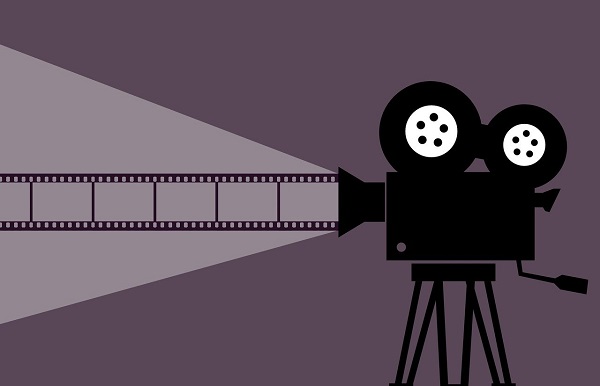Jose Silva’s Mental Screen Visualisation Method for Manifestation
As a personal development enthusiast, I find it truly remarkable how Jose Silva possessed such profound knowledge of the human mind. His works remain not only relevant in today’s world but also widely used by people for various purposes. Many therapists have incorporated methods inspired by his teachings into their practice. In a decade when people showed little interest in exploring the power of the mind, albeit controversial, this man was pioneering and creating methods like the mental screen visualization method and how to manifest using such methods by exploring hypnotherapy and metaphysics to develop mind tools that were far ahead of his time.
If you explore the Silva Method and the techniques he employed in his courses, you will undoubtedly discover that he was indeed a pioneer in the field of personal development.
You may be familiar with various visualization methods. In this post, I will provide instructions on how to perform a specially crafted visualization technique developed by Jose Silva, known as the ‘mental screen technique.’ This technique is still widely used in training programs based on the Silva Method. Followers of this method claim it to be extremely helpful for manifestation, problem-solving, healing, self-improvement, and more because it is not only simple to use but also provides proper guidance on how to harness one’s imagination. We will explore how to perform this technique in later sections of this article, but first, let me introduce you to a few key concepts you should understand before we delve into the process.
Imagination vs Visualization
Have you ever wondered whether visualization is synonymous with imagination? Well, they are not, in simple terms, we can liken imagination to the Earth, and visualization to a continent. This analogy illustrates that visualization is a subset or branch within the broader spectrum of imagination.
Imagination is the mental faculty that allows us to conjure up images of things that may or may not exist in the real world. On the other hand, visualization is the deliberate use of this mental faculty for a specific purpose. For instance, when you’re sitting and thinking about what might happen at a birthday party, you’re simply imagining various scenarios that may or may not occur. However, when you intentionally use your ability to create mental images of a possible event for a specific purpose, such as planning your entrance or selecting a gift, this is visualization.
In essence, when imagination is intentionally employed for a specific purpose, it transforms into visualization—much like how steel, when cast, becomes a tool that simplifies our work.
That’s why creative visualization allows us to plan things, furthermore when honed to greater levels one can also use their ability to visualize to rehearse and practice for a particular sport or any other such purpose.
In the Silva Ultramind program, Vishen Lakhiani shares an intriguing insight into Jose Silva’s perspective on this distinction. According to him, visualization is the act of using our imaginative ability to receive inspiration that can assist us in manifesting our desires. Mr. Silva believed that imagination and visualization function like transmitters and receivers, establishing a two-way channel enabling one to communicate with the universe or higher self.
This perspective underscores why the mental screening technique is designed not only to convey our desires to the subconscious mind but also to receive answers in a similar manner. This technique is considered powerful because the virtual screen it employs serves as the platform where we pose our questions and receive answers.
The Silva Mental Screen Technique
Now that we have seen how Jose Silva views the mental faculty of our mind known as imagination and believes it can work wonders when you make proper use of it, let me introduce you to his exercise based on creative visualization where he encourages you to imagine as a third person.
When it comes to visualization, there has always been a debate about which technique is more effective: one in which we imagine from a first-person perspective or one where we view ourselves from a third-person perspective, like a spectator. Many experts in the field of personal development believe that creative visualization is far more productive when experienced from a first-person perspective as if you are actively living what you are imagining. I share this belief, which aligns with the free-flow visualization method I use.
However, I am also aware that many people initially find it challenging to visualize. That’s when a process like this one can be incredibly helpful. The important thing to note is that the specific approach you choose for visualization may not make a huge difference; what truly matters are the emotions and feelings evoked by the visuals. The advantage of methods like the mental screen technique is that they simplify the process. Moreover, within the context of the teachings of the Silva Method, this technique has proven to be very effective.
1 Relaxation
This step is considered the most important in the process because Jose Silva attached special significance to a mental state known as the alpha level of mind. This state occurs when a person’s mind is less active than during wakeful phases but more active than during slumber.
To achieve this state, you can begin by taking a few deep breaths while mentally affirming, ‘I am entering a deeper state of mind.’ Next, initiate a reverse countdown by declaring your intention to be completely relaxed when you reach zero. Start your countdown from 10 and gradually count down in reverse order. Simultaneously, shift your focus to different body parts, imagining each one entering a deep, relaxed state.
2 The Screen
There’s something unique about Mr. Silva’s instructions for certain procedures; he places significant emphasis on details. For instance, in this procedure, he instructs you to imagine a large screen positioned approximately 6 feet away from you, and at an elevation of about 20 degrees above your line of sight, which corresponds to a point that is about 20 degrees higher than where you would typically look straight ahead.
However, it’s important not to get overly caught up in the specifics. You can simply visualize a screen that roughly aligns with these measurements. The slight elevation of the screen is intended to encourage your eye movement slightly upward, as Jose Silva believes this has significance in maintaining the alpha state.
3 Visualization
Yes, this process involves visualizing things within an imagined screen. It might sound more complicated than it actually is, but bear with me. I’m saying this based on my experience and I have known from various sources that many people find it easier to first visualize a background and then imagine something on it. For instance, imagining an apple in a picture is often easier than conjuring up a 3D image of an apple. Similarly, when you first visualize a screen and then project images onto it, the process can become more manageable. Perhaps this is because we are accustomed to seeing moving images on screens due to our exposure to television and cinema, or there could be other reasons behind it. However, trust me on this: visualization becomes more accessible when done in this manner.
In this step, you place yourself in the imagined scenario where you have achieved your desired outcome. For example, if your goal is to secure a new job, visualize a “mini-movie” of yourself working in the new environment or receiving your first paycheck from the new job on the screen.
4 Affirmations and Gratitude
I always recommend to my readers that when visualizing their desires, they can enhance the process by incorporating positive affirmations. If you use affirmations that empower you and align with the aspects of your imagined scenario, it can be highly beneficial. For example, while visualizing your dream car, you might use an affirmation like “I am becoming wealthier and prosperous every day.” The type of affirmation you choose depends on your preference, and you can even create custom affirmations(by learning how it’s done) tailored to your specific goals.
Once you have visualized your goals or desired scenario you can use gratitude to generate feelings of faith in the process and in the power of the universe that you will be shown the way to achieve what you want. After this, you can count gradually from zero to ten and open your eyes at the count of ten.
So, these were the four simple steps to perform this particular mental screen imagination exercise as advocated by Jose Silva. There are many visualization methods to choose from, so you can select the one that suits you the most. However, what sets the methods taught in programs based on Silva Mind Control apart is their strong emphasis on something called ESP, also known as extrasensory perception. This form of intuition development enables people to receive ideas that go beyond their current thought framework, serving as inspirations akin to blueprints that can illuminate the path toward achieving one’s goals. If you are interested in Jose Silva’s teachings, I highly recommend trying the Silva Ultramind program(read my review here). It offers comprehensive home study course materials to train you in using these techniques. I’ve personally benefited greatly from this course, and I wish the same for you.
I believe you found this post both enjoyable and informative. If you wish to share your thoughts on this topic or your personal experiences with the use of techniques like this, kindly share your comments in the section below. Your valuable feedback and insights are greatly appreciated, and they inspire me to create more content of this nature.
For further assistance or inquiries, please don’t hesitate to reach out via the contact page. I am more than willing to provide support for any questions or concerns you may have.
If you discovered this post to be helpful, I encourage you to share it across your social networks to help disseminate this knowledge to a wider audience.
